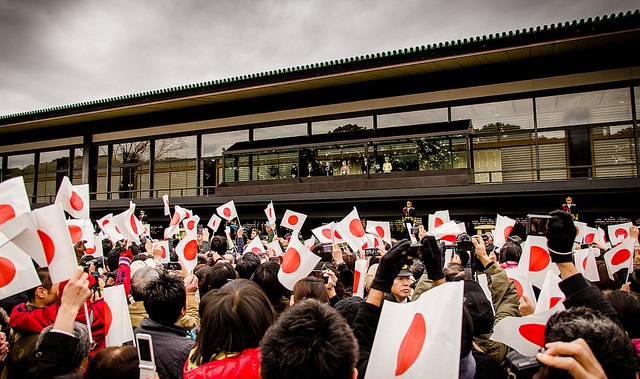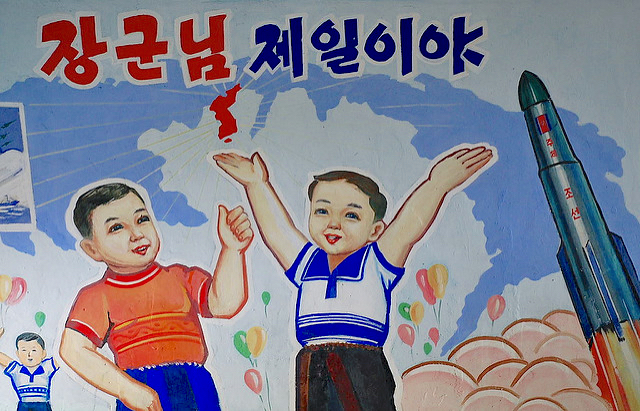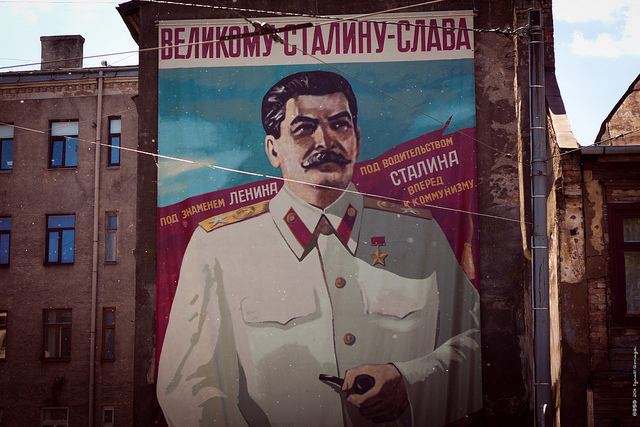In 1945, The Saturday Evening Post proudly proclaimed that “The G.I. Is Civilizing the Jap” by showing the “savage” and “dirty” natives how to fix cars without breaking them, and how to go to the bathroom. A 1951 follow-up subsequently reported that the Japanese they visited six year prior, with their nightsoil gardens and Shintoism, now had gas stoves and Christianity! This idea, that the American Occupation would teach the Japanese how to act like modern men and women, was quite strong at the end of the Pacific War.
For General Douglas MacArthur, commander of the Occupation administration (SCAP), democratizing Japan was as much a personal manifest destiny for him as America’s presence in Asia was a benevolent historical one. Since basic cultural stereotypes underwrote US policy and media coverage, the primary debate among the participants was about the Japanese people’s perceived educability by American teachers. The story of the Occupation, from 1945 to 1952, is about shared assumptions regarding the limitations of the Japanese psyche: how much racism would be applied, basically. In the end, the conservative viewpoint won out, due mainly to concerns about alleged communist infiltration, and ideas about the Japanese being naturally vulnerable to Bolshevism.
During WWII, the ruthlessness of the island hopping campaign, and revelations of war crimes throughout Asia had hardened American attitudes towards the Japanese. Frank Capra’s Why We Fight documentary series, especially the first installment, and his undistributed film Know Your Enemy: Japan (1945) embodied these views and helped shape them. Prelude to War (1942) certainly divided the world into good and bad guys. There was a free world and a slave world, which was colored in shadows, where “the march of history [is] reversing itself” and which “must die” if the US is to survive.
Prelude‘s primary focus was cultural difference: to make the GI aware that his enemies’ value system was the opposite of his, and that his was the just, modern, and thinking man’s cause. Capra’s The Battle of China (1944) proceeded to expand on the cultural characteristics of Japan that led to the war by contrasting China and Japan. China, despite its fragmentation and medievalism, had taken the “right” stuff from the West. Its people understood capitalism and constitutionalism. The Japanese did not. They only understood double-crossing and conquest – their “borrowing” was plagiarism without understanding, and their whole war machine was built on cheap knockoffs and grand deceptions. And the US “let” these “barbarians” get away with it because it did not understand what fanatical dreamers they were.

But why were the Japanese such dreamers? Know Your Enemy: Japan was meant to offer the definitive answer on that: the Japanese are volcanoes that all the humanitarianism is “burned out of” at a young age. Even the musical score reinforced this. Fantasia had been released in 1940, and anyone who had seen it would have recognized the soundtrack. Know Your Enemy borrowed the music used during the Disney feature’s most violent and supernatural sequences.
Demonization was not a consensus easily arrived at by the production crew, though. The film took so long to produce (and was deemed unnecessary in the end) because the War Department kept demanding it emphasize the Japanese people’s “negative” racial qualities – as “mad dogs” – while the screenwriters thought it would be better to blame Japan’s leaders and adopt a patronizing tone towards the “dumb” commoners. The War Department’s hardline views won out. “Whatever Japan took from the West or the Chinese, the warlords never took the moral or ethical principles that went with them.” The Japanese were barbarians, and even a serious academic journal, Far Eastern Survey, wondered if an occupation could succeed without “wholesale slaughter.”
However, as the US advanced on the home islands, and it became clear there would be a postwar occupation, this tone began to decline. Propagandists, bureaucrats, and journalists now focused on the question of the Japanese mind, the molding of “a developing Asian consciousness,” in the words of Secretary of State Dean Acheson. This represented a turn from wartime propaganda, which depicted the Japanese as alien, insectile, and simian.
Now, the official line was that “it is a mistake to think that all Japanese are predominantly the monkey-man type.” The Saturday Evening Post, in an indication of this evolving thinking, posited in September 1944 that the good behavior of Japanese and Japanese-Americans in Hawaii showed that the Japanese in Japan “can, in time, be turned into decent, law-respecting citizens” too and were not “a hopeless immoral race” after all. So, the Japanese could be redeemed. But how?
It was clear that the old certainties were useless. “There was a school of thought that believed it possible to determine the friends of the United States by table etiquette,” wrote SCAP economics officer E. M. Hadley in her memoir, “those with beautiful table manners were friends; those ignorant of such matters were not.” She felt that these individuals gravitated towards those Japanese most implicated in imperialism. This was a clear indictment of people like former Ambassador Joseph Grew, who surrounded himself with cosmopolitan Japanese that ultimately supported the Empire.

The idea of “genuine” Westernized Japanese, which is how redemption would take place, was therefore a tricky one. Here, a more cautious racism emerged than the imperial idea of baptizing the Japanese in Western values. The most common refrain from Grew’s critics, in fact, was not that he was a big business conservative, as later historians like Howard Schonberger would charge, but that he had been bamboozled by Japan’s “wily” fake liberals. Wealthy, squeezing, unscrupulous, and false were words of choice for these men. Duplicity was a perfected Japanese art form, and Americans – like ostriches with their heads in the sand – fell for it.
Grew himself supported this characterization: he did not think anything better could be expected of the “Yamato race.” Though his views were less extreme than the more openly racist feelings expressed by other U.S. officials, it was still grounded in a racial determinism: they “dress like us,” but “they don’t think as we do.” In contrast, the “reputable citizens” who peppered Grew’s memoir, Ten Years in Japan reads as a yearbook of Imperial Japanese high society. These were the people who would resume the westernization of Japan.
Grew knew and respected this old guard- men who the New Dealers from the start regarded as revanchist liabilities. They, Grew’s friend Joseph Ballantine told George F. Kennan in 1947, were “able to raise Japan from a feudal state into a first class power in the course of seventy-five years,” after all. Grew and his more business-minded associates, in what became know as the Japan Lobby after his retirement, were ideologically very close to these nobles, prewar politicians, and zaibatsu families. Despite all of the talk about alien Japanese mentalities and childish inferiority complex, one very strong trans-Pacific cultural connection before the war, and that was through the business communities that Grew and his allies circled through in both countries.
Most other areas of possible cultural exchange were anemic. What followed was only logical. American skeptics of the New Deal at home, like Grew and Ballantine, also skeptical of the “common” Japanese person’s capacity for free thinking, came to share the views of Japan’s ruling class that any substantial reforms would bring anarchy. “[My] experience [has] shown that democracy in Japan would never work,” Grew had concluded just before the war’s end.
Talk of social reforms that were “capable of jarring loose the psychological blinders and strait jackets which have been imposed on the Japanese” genuinely worried both Grew and his prewar friends in Japan. All agreed: American democracy and labor standards were not suited to Japan, and any attempt to dilute their power would end in a communist takeover. It is fascinating that American racism would ally with Japanese classism in such a manner to quash substantive democracy in the country. At the same time, though, it is a familiar story in many post-colonial states.
Thomas Arthur Bisson, briefly a member of SCAP and already a popular academic on Japan, found such attitudes appalling. Japan had, to be sure, been a basically feudal society in his view, and as he had been arguing since the 1930s, the whole system created under the Meiji Restoration was to blame for WWII. The conflict was not an aberrant period, but the logical conclusion of Japanese history to that date. He wrote in 1944 that “what democracy had existed was an elaborately faked Westminster-style parliament actually led on by the militarists.”
The Meiji Restoration counted for nothing because “Japan’s spectacular rise to power rested on unsound foundations” of feudalism. In other words, liberalism never really settled it, and republican values were shaky from the start: a similar core story as the Weimar Republic. At the time, though, the prevailing American excitement was between the ideological tent-poles of either seeking stability, or winning the Japanese to the American way and preventing the Soviet Union from gaining another ally. The trajectory of Japanese history since then, and the way these attitudes framed American policy in Vietnam, is enough proof of how damaging these imperial fantasies would become.
Photographs courtesy of Alessandro Bafa, John W. Schulze, and Brandon Otto. Published under a Creative Commons License.





